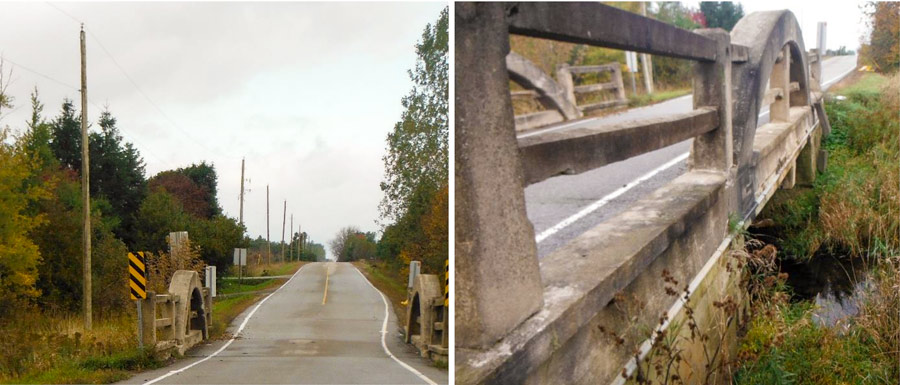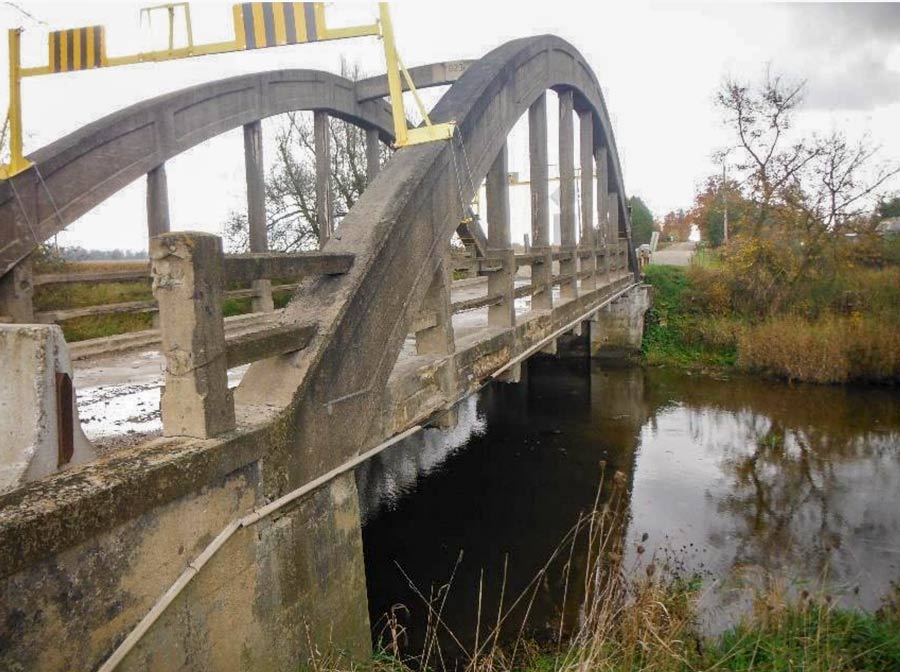ELORA – Centre Wellington recently endorsed a plan to replace two bridges in former West Garafraxa.
At the Dec. 16 meeting Centre Wellington councillors heard from Stephen Keen, a CIMA consultant, about the municipal class environmental assessment.
Bridge 24-WG is located on the 1st Line between Sideroads 10 and 15 north of Fergus. It is a concrete bowstring arch over Irvine Creek constructed in 1922. It was closed to vehicle traffic in July 2018.
Bridge 4-WG is located on the 5th Line between Wellington Road 18 and Eramosa-West Garafraxa Townline south of Belwood Lake. It is also a concrete bowstring arch over a tributary of the Speed River and was constructed in 1923. There has been a load limit of 5 tonnes since 2016.

Bridge 4-WG is located on the 5th Line between Wellington Road 18 and Eramosa-West Garafraxa Townline south of Belwood Lake. It is also a concrete bowstring arch over a tributary of the Speed River and was constructed in 1923. There has been a load limit of 5 tonnes since 2016. Submitted photo
Keen presented council with four alternatives including:
– do nothing: potential future removal costs of $350,000 (24-WG)/$200,000 (4-WG);
– rehabilitation: approximately $8.1 million (24-WG)/$4.35 million (4-WG);
– replacement: approximately $3.2 million (24-WG)/$1.4 million (4-WG); and
– removal: approximately $350,000 (24-WG)/$200,000 (4-WG).
He recommended complete replacement of both bridges.
“There’s a number of advantages of replacing the bridges in terms of providing adequate structure to accommodate large heavy vehicles, farm equipment, two lanes of traffic and also to provide a safer bridge obviously,” Keen told council.
The municipality would need continuous updates every 25 years for rehabilitated bridges. However, a replacement bridge would have a lifespan of 75 years.
Councillor Stephen Kitras asked why the total project was more than budgeted in the current capital budget.
Managing director of infrastructure services Colin Baker explained the capital budget estimate included assumptions and is created before the hydraulics are studied and the geotech conditions are evaluated.
“I think we’ve done enough bridges to know this process,” said Mayor Kelly Linton. “That’s the way you do the process and the price might even come in higher after we go out to tender.
“So it’s a staff process to identify how much we anticipate based on a set of assumptions. We do an EA, get a little bit finer on the costing and then we go out to tender and see what the market there is.”
To preserve the heritage value Keen suggested the bridges and settings be professionally documented before reconstruction begins.
“The replacement structure should be designed in a manner that is sympathetic to the cultural heritage attributes of the subject bridge,” he said.
Councillor Bob Foster asked if any part of the bridges could be preserved.
“It’s a historic, iconic design,” Foster said.
“Is there any ability to add those bowstrings even cosmetically rather than structurally to maintain the heritage and culture and honour our history?”
Keen said that’s possible but it would be more costly.
“The township’s approach, same with the St. David Street bridge, we do have a commemorative plaque, commemorating the previous structure that’s attached to the bridge,” Baker said.
Councillor Steven VanLeeuwen said the heritage committee was looking at taking a piece of the bridge and relocating it to Bissell Park or somewhere visible.
“I can’t even see taking the whole entire bridge, it wouldn’t be worth the dollars,” he said.
“But I guess will there be consideration to it, while they disassemble, to look at some of those options?”
Baker said it was a possibility and that it would be looked at during the detail design phase.
“Maybe talk to a contractor or two to get an idea of costs because it’s not something that happens every day,” he said.
Next steps
Once the environmental assessment is deemed complete, the township will be able to include the project in its budget and build the bridges.




